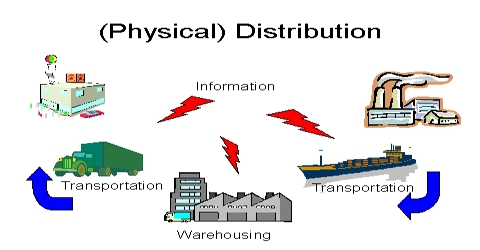Physical distribution is the assembly of activities linked with the supply of finished product from the production line to the customers. Once goods are manufactured, packaged, branded, priced, and promoted, these must be made obtainable to consumers at the correct place, in exact quantity and at the accurate time. For example, a person convinced about the quality etc. of a product, like, a detergent soap, wants to buy the same. He/She goes to a retail outlet and asks for the product. If that product is not obtainable in that shop, he/she may buy some of the substitute brand available. This way a definite sale is misplaced because goods were not accessible at the place where the consumer wanted to buy. Thus, it is an significant accountability of the marketers to make the product physically obtainable at a place where the consumers would like them to purchase.
Functions of Physical Distribution
The key functions within the physical distribution system are:
- Customer service
- Order processing
- Inventory control
- Transportation and logistics
- Packaging and materials
Physical distribution covers all the actions required to physically move goods from manufacturers to the consumers. Vital activities involved in the physical distribution include transportation, warehousing, material handling, and inventory control. These activities constitute major components of physical distribution.














